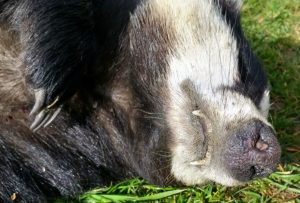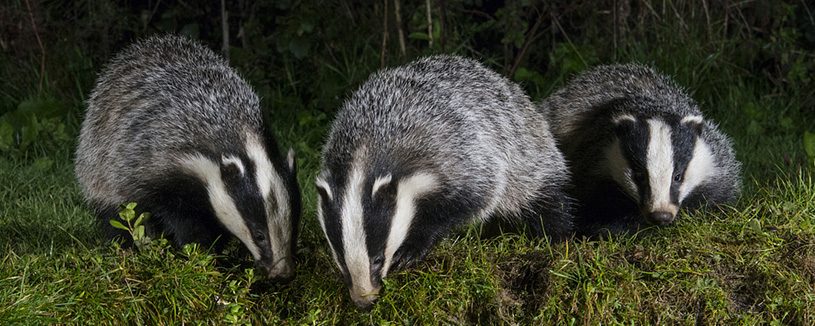
Dominic Dyer, chairing the State of the Earth evening session at Birdfair on 15th July this year, asked two of his assembled panel guests about badger culling. The first, Sir Iain Boyd, the former Chief Scientific Advisor (CSA) to Defra commented, beyond his usual emphasis that the problem is more with people than badgers, that he “suspected that the evidence is suggesting it doesn’t work”. And “if badger culling isn’t working it shouldn’t be done, that’s absolutely clear.” Presumably, a reference to the most recent peer reviewed science (here).
The second guest, Tony Juniper, currently chairman of Natural England, freshly reappointed for another 3 years, was asked about the ecological impact of changing ecosystems by removing most of a dominant species. His response was slightly less coherent. Knowing his staff had just issued more supplementary killing licences and were in the final stages of lining up licences for a further 40,000 mostly healthy badgers to be killed this and the following three autumns. He picked words carefully: “we did say that it wouldn’t be a good idea” and “Natural England’s advice was that it probably wouldn’t work and we should try other methods” and (not answering the question) “will it have an effect on protected sites and protected species?.. we are looking at that too.”
Not mentioned by him, Juniper’s hands were tied due to a legal case that would play out a fortnight later in the High Court, that turned into a spectacular environmental travesty (here), remining us just how far government and the judiciary are now leaning towards unsound, politically expedient policies. Briefly, Defra remade its improper decision not to look at impacts from badger culling, supported by Natural England, without telling the court or the claimant. It rubber stamped its do-nothing approach in a way that meant Defra and Natural England could carry on doing little or nothing, escaping justice via the back door. It was ‘too late and too expensive’ now to study and deal with the problem anyway, was their best position, and that was their final decision. Looking at it was all they were doing.
Natural England had promised the courts in 2018 that they were on the case, with a research programme that was kept secret. Secret, it turns out because the BTO analysis used to justify continued culling had mistakes in it, and so had to be held back for two years while culling continued and Natural England staff worked with BTO to get the work through peer review. More recent events in the sorry saga have been exposed thanks to wildlife stalwart Mark Avery (here) and his guest blogs by the main expert witness for the three Judicial Reviews, Dominic Woodfield (here). Dominic has, in his blogs and comments, unzipped the whole matter from start to finish and dealt with the response from BTO during the sordid passage of the work over its last five years. It is worth taking the time to read the new blog and those that went before, to get a firm understanding of how Natural England have obfuscated their statutory duty and worked hard at minimising effort to examine the problem, while at the same time helping badger cull companies with advice and support to find their cull targets.
Juniper is aware of this of course, and efforts to get funding from Defra to look at the issue may have been turned down. But he has another problem. He has a relationship with and has written a book with Prince Charles. Who is a known lobbiest for badger culling, with his ‘black spider’ letters urging Tony Blair to start culling, a notable royal intervention (here). There followed a concerted effort to neutralise badger culling opposition in mainstream wildlife ngos between 2008 and 2013. Now Prince is King, what will happen? The King faces the reality that the tenuous evidence of badger involvement in bTB in cattle fifteen years ago, then presented as strong evidence, remain tenuous. Critically, recently published research using all of the relevant government data suggests that badger culling since 2013 simply shows no sign at all of working. This is despite Defra’s attempt to use small selective amounts of data with over-elaborate variables to try to show that it does. Defra used their most senior staff CSA Gideon Henderson and Chief Vet Christine Middlemiss to try to rebut the new published research, but this has only made them look foolish. They published, then retracted flawed data (here) that showed huge benefits from badger culling in its first two years, while insisting in their rebuttal of the new analysis that there is little or no benefit to be had in the first 2 years. Leaving professional vets, scientists and commentators completely baffled. Juniper and Charles III now have a big opportunity to help put things right that have gone terribly wrong on their watch.
Most of all, with the BTO paper just published (behind a pay wall), there is a final piece of chicanery. There is no sign of the all-important last line of the conclusions in the papers introductory abstract. The latest BTO magazine simply says that a similar (to the new publication) minimal approach might be repeated. Yet in the BTO paper, the authors call for a landscape-scale quasi-experimental approach: “to provide stronger inference about the complex potential ecological effects of culling predators such as the badger”
More and more journals are making sure that study limitations are placed in scientific papers and their abstracts, partly a response to the science reproducibility crisis. What this all means is that Natural England corner-cut to address important questions about the effects of the ecological impact of culling. It now admits that the minimal approach it employed is inadequate, and points to the kind of study it now agrees should have been done. This, in truth, is confession of guilt when there is little chance of a retrial before thousands more badgers are gunned down.
You can read Dominic Woodfields new blog ‘New paper same old same old’ here.

